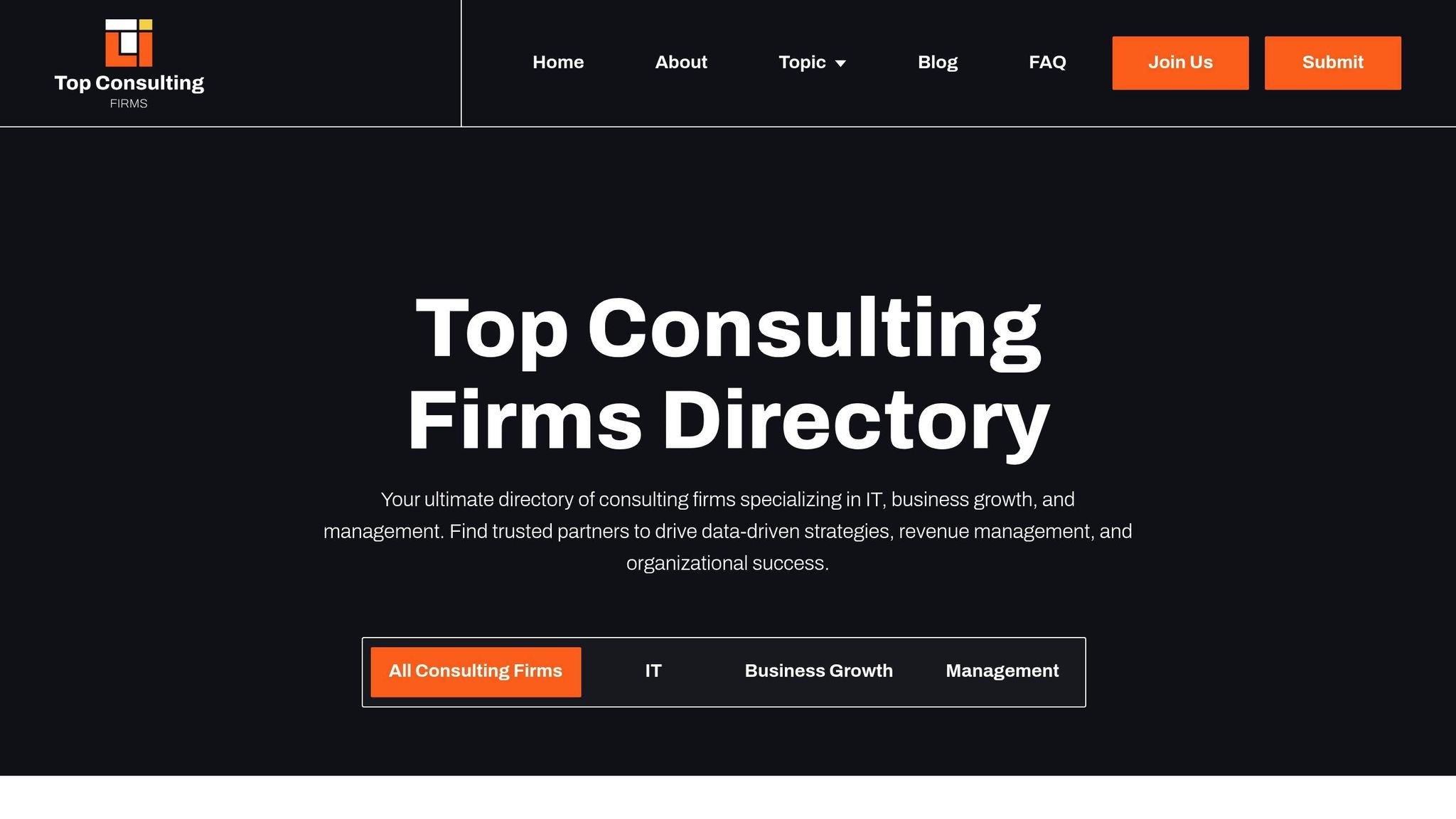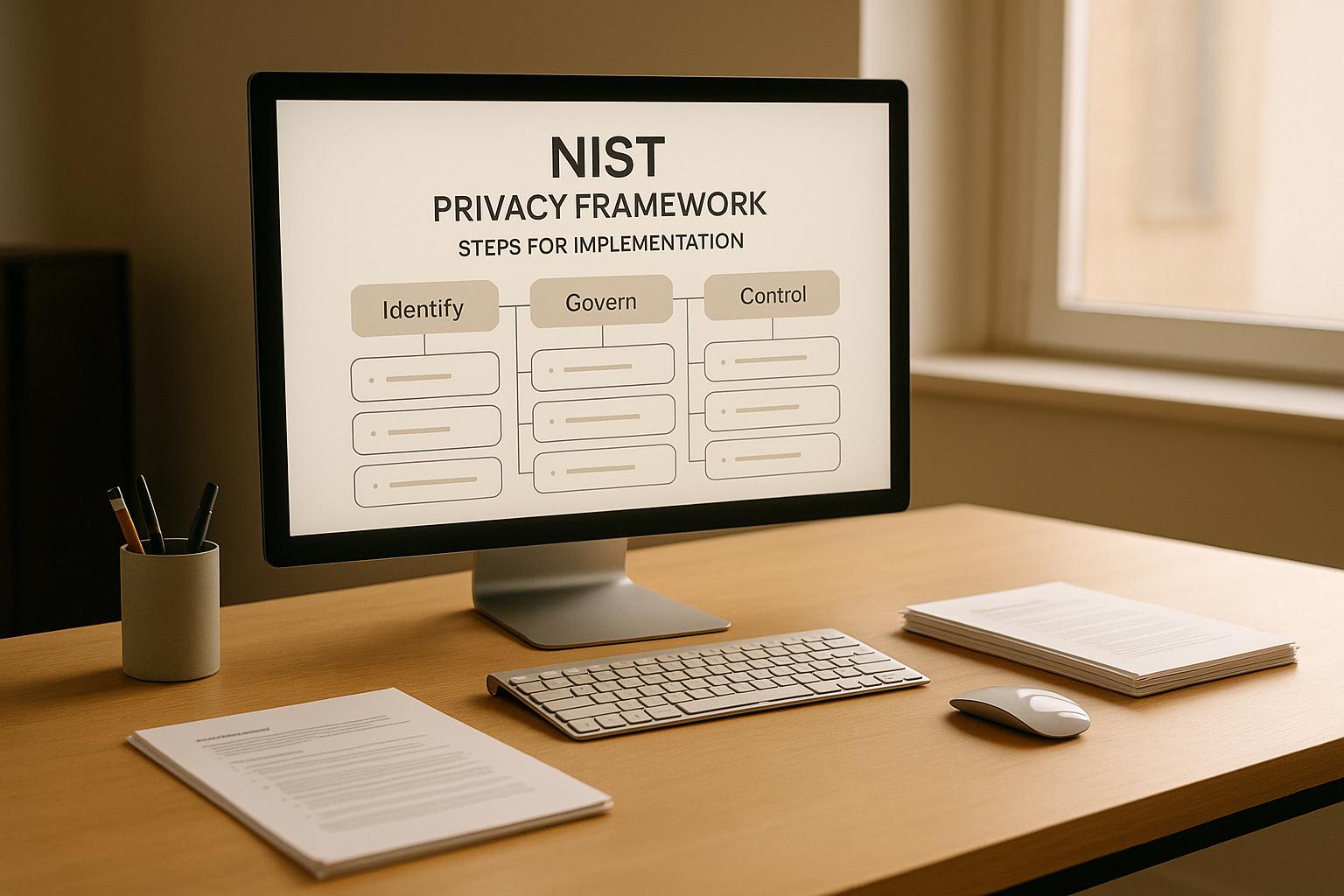Impact investing blends financial returns with solving societal challenges, like poverty and climate change. It goes beyond donations by funding scalable solutions that create measurable change. Scaling social innovation involves expanding successful programs to broader regions or influencing systems, policies, and cultural shifts. Key strategies include:
- Scaling Out: Expanding reach by replicating programs in new locations, often using standardized processes or digital tools.
- Scaling Up: Influencing systems through policy advocacy, institutional partnerships, or market changes to create widespread impact.
- Scaling Deep: Transforming values and mindsets through narrative shifts, leadership development, and intergenerational approaches.
Impact investors support these efforts through models like venture philanthropy, social impact bonds, and program-related investments. Success relies on precise impact measurement, strong partnerships, and navigating regulations effectively. By combining private capital with proven strategies, organizations can address large-scale challenges and drive systemic change.
Social Innovation Foresight #3 on Impact Investing
Main Scaling Strategies for Social Innovation
Expanding the reach and impact of social innovation requires thoughtful strategies tailored to different goals. Across the United States, three main pathways have proven effective in creating meaningful change. Each focuses on a unique aspect of scaling - whether it's growing reach, influencing systems, or transforming culture - and demands specific investments to succeed.
Scaling Out: Expanding Reach
Scaling out is all about taking a successful model and bringing it to more people or new places. This could mean replicating a program across different communities or adapting it to serve larger populations while staying true to its core principles.
The secret to scaling out lies in creating standardized processes that can flex to meet local needs. Organizations often develop tools like implementation guides, training programs, and quality checks to ensure consistency while allowing room for local adaptation.
One effective method is the franchise-style model, which combines a proven framework with the flexibility of local ownership. Here, the central organization provides the structure, training, and ongoing support, while local partners customize the program to fit the unique needs of their community.
Digital tools play a big role in scaling out. They help standardize delivery, track outcomes, and keep quality high - all while reducing the cost of expansion. This kind of infrastructure ensures that programs maintain their effectiveness across multiple locations.
However, geographic expansion isn’t without its challenges. Adapting to local regulations, cultural norms, and economic conditions is critical. For example, a program that works in urban California might need significant adjustments to succeed in rural Mississippi.
While scaling out focuses on growing reach, scaling up takes aim at transforming the systems that shape our world.
Scaling Up: Influencing Systems
Scaling up is about changing the bigger picture - shifting policies, regulations, and systems to create widespread impact. This strategy works to influence how resources are distributed and services are delivered, reaching far beyond the capacity of any single organization.
One powerful approach is policy advocacy. By pushing for changes in laws or government policies, organizations can create conditions that benefit millions. For example, advocating for reforms in education funding or healthcare reimbursement can have a ripple effect across entire populations.
Another key tactic involves institutional partnerships. Collaborating with government agencies, corporations, or major nonprofits can embed innovative solutions into existing systems. Think of a state education department adopting a new teaching method or a healthcare network rolling out an improved care model - these changes extend impact on a massive scale.
Market transformation is another way to create systemic change. This could mean introducing new standards, certification programs, or business models that encourage industries to prioritize social good. While these shifts take time and commitment, they can fundamentally reshape how entire sectors operate.
Finally, evidence generation and dissemination is crucial. By producing solid research that proves the effectiveness of innovative approaches, organizations can persuade decision-makers to adopt similar strategies. However, this requires significant investment in evaluation and communication.
While scaling up tackles systems, scaling deep focuses on the cultural shifts that sustain long-term change.
Scaling Deep: Changing Culture and Values
Scaling deep is about going beyond programs and policies to address the mindsets, relationships, and cultural norms that drive social issues. It recognizes that lasting change often starts with how people think and connect with one another.
One major strategy is narrative change. This involves reshaping public conversations around issues like poverty, mental health, or climate change. Through storytelling, media campaigns, and cultural initiatives, organizations challenge outdated assumptions and encourage new ways of thinking.
Another approach is leadership development and network building. Instead of delivering solutions to communities, these strategies invest in local leaders who can drive change from within. Over time, these networks grow into self-sustaining ecosystems that continue to innovate and create impact.
Cultural and artistic interventions also play a unique role. Art, storytelling, and cultural expression can shift values and perceptions in ways traditional methods cannot. Supporting creative leaders helps communities reimagine how they approach challenges.
Lastly, intergenerational approaches aim to change values across age groups. By engaging both current leaders and younger generations, these strategies ensure that cultural shifts take root and endure. For example, combining youth programs with adult education can foster shared goals and mutual understanding.
Together, these strategies - expanding reach, influencing systems, and transforming culture - create a powerful framework for lasting social innovation.
Impact Investing Models for Scaling Innovation
The landscape of funding social innovation has evolved well beyond the traditional grant-making approach. Today, impact investors are using advanced models that combine financial returns with clear social benefits, creating opportunities for growth on a larger scale. These strategies emphasize the need for patient capital, shared risk, and a strong partnership between funders and social innovators. Below, we explore three key financial models that demonstrate how impact investing supports expansion.
Venture Philanthropy and Blended Finance
Venture philanthropy takes inspiration from venture capital, applying its principles to the social sector. This model provides multi-year funding, paired with strategic guidance and performance tracking, to help organizations build capacity and scale effectively.
Blended finance takes this concept further by combining various funding sources - grants, low-interest loans, and market-rate investments. By structuring investments into layers, philanthropic capital often assumes the highest risk, such as taking the first-loss position. This reduces risk for private investors, making it easier to attract additional funding.
This model is particularly useful for organizations transitioning from pilot programs to full-scale operations. At this critical stage, ventures often require significant working capital, operational expertise, and validation in the market - areas where venture philanthropy excels. Support often includes board representation, strategic advice, and access to valuable networks.
Funding in these setups is often tied to clear benchmarks, ensuring accountability and directing resources to the most effective initiatives. This performance-driven approach helps organizations stay focused on measurable outcomes, overcoming common challenges associated with scaling.
Social Impact Bonds and Outcome-Based Funding
Social Impact Bonds (SIBs) represent a shift in how social programs are funded, moving from paying for services to paying for results. In this model, private investors provide the upfront capital needed to fund social initiatives, while government agencies repay them only if specific, measurable outcomes are achieved.
This structure creates strong incentives for innovation and efficiency. Service providers are motivated to focus on strategies that deliver real results, as payment depends entirely on the program's measurable impact on people's lives. Both SIBs and other outcome-based funding models tie financial returns to the level of social impact achieved, with success payments increasing as outcomes improve.
While venture philanthropy emphasizes building capacity through strategic support, SIBs are all about delivering results. Risk is shared between investors and service providers - the former take on the performance risk, while the latter concentrate on execution.
Contracts in these models often include pricing mechanisms that reflect the cost savings or value created for government agencies by successful programs. This results-driven approach allows organizations to grow by proving their effectiveness through measurable and impactful outcomes.
Program-Related Investments (PRIs)
Program-Related Investments (PRIs) offer private foundations a way to use their endowment assets to support charitable purposes while still earning financial returns. Unlike traditional grants, PRIs are structured as loans, equity investments, or guarantees, with the primary goal of advancing the foundation's mission.
PRIs prioritize social impact over financial gain, making them ideal for funding early-stage or higher-risk innovations that may not yet attract commercial investors. They are particularly effective for revenue-generating social enterprises that need patient capital to achieve sustainability. These investments often come with longer repayment terms and more flexible conditions compared to conventional loans, giving organizations the breathing room they need to grow.
Loan guarantees are another powerful tool within PRIs. By guaranteeing portions of loans from commercial banks, foundations can help social enterprises access credit they might otherwise struggle to secure. This approach leverages foundation resources to unlock additional private capital, expanding funding opportunities for scaling.
One major advantage of PRIs is their ability to recycle funds. As loans are repaid or equity investments yield returns, foundations can reinvest these funds into new ventures, amplifying their impact over time. Many foundations report that their PRI portfolios deliver both meaningful social outcomes and satisfactory financial returns.
PRIs also offer tax benefits, as they count toward the 5% annual distribution requirement for private foundations. This allows foundations to allocate more resources toward charitable endeavors while preserving their long-term growth potential.
The flexibility of PRIs makes them highly adaptable to the needs of social enterprises. Whether it's providing working capital, financing equipment, or bridging funding gaps during periods of growth, PRIs can be tailored to support organizations at different stages of their journey.
These financial models - venture philanthropy with blended finance, outcome-based funding, and PRIs - serve as essential tools for turning promising social innovations into scalable solutions. Each approach addresses unique funding challenges, from mitigating risk to aligning incentives around measurable results, creating a solid foundation for transformative growth.
sbb-itb-97f6a47
Key Requirements for Scaling Success
Innovative funding models might lay the groundwork for growth, but scaling up successfully involves more than just financial resources. Organizations need to meet specific operational and strategic benchmarks to transform promising pilot programs into sustainable, large-scale solutions that can drive meaningful change in communities.
Impact Measurement and Evaluation
To scale effectively, organizations must have strong systems in place to measure and evaluate their impact. Why? Because impact investors want clear evidence that their investments are delivering real social benefits. This makes well-structured evaluation frameworks a must-have for securing growth funding.
Start by setting clear baselines and defining measurable outcome indicators. Then, leverage technology to gather real-time feedback. Instead of relying solely on annual evaluations, organizations that succeed at scaling often use data analytics and tech platforms to monitor their progress weekly - or even daily. This real-time approach not only allows for quick adjustments but also reassures investors that the organization is both data-savvy and responsive.
Standardized reporting frameworks are another critical piece of the puzzle. Aligning with systems like the Global Impact Investing Network’s IRIS+ or the UN Sustainable Development Goals makes it easier to communicate results to potential funders. These frameworks offer a shared language and trusted metrics that resonate with investors.
Cost-effectiveness is also key as programs grow. Funders want to see either a reduction in cost per beneficiary as scale increases or, at the very least, a clear justification for any rise in costs through deeper impact. By tracking both financial and social metrics, organizations can paint a full picture of their efficiency and effectiveness.
These practices lay the groundwork for collaboration across sectors, which is vital for scaling.
Cross-Sector Partnerships
Once robust evaluation methods are in place, cross-sector partnerships can amplify an organization’s ability to scale without requiring a proportional increase in internal resources.
- Government partnerships open doors to infrastructure, regulatory support, and distribution channels.
- Corporate partnerships provide access to technology, supply chains, and marketing platforms while helping companies meet their social responsibility goals.
- Nonprofit partnerships tap into existing community relationships, allowing for broader reach without duplicating services.
- Academic partnerships bring research credibility, evaluation expertise, and access to student talent, all of which strengthen the evidence base for scaling efforts.
To make these partnerships work, roles and responsibilities need to be clearly defined. Organizations must also invest in building strong relationships and maintain regular communication to ensure these collaborations remain productive as they grow.
Policy and Regulatory Alignment
Navigating regulations is another critical piece of the scaling puzzle. Organizations need to understand the federal, state, and local rules that govern their operations and address compliance issues proactively to avoid obstacles down the line.
Regulatory sandboxes and pilot program designations can provide temporary regulatory flexibility, giving organizations the chance to prove their effectiveness. Many states offer these opportunities, particularly in sectors like healthcare, education, and financial services.
As scaling efforts expand beyond local markets, policy advocacy becomes increasingly important. Changes in regulations, government funding priorities, or public programs can have a major impact on scaling strategies. Building relationships with policymakers and actively participating in policy discussions can help organizations protect their interests and stay ahead of potential challenges.
State-by-state regulatory differences also demand flexibility. For example, what works in California might not be allowed in Texas. Organizations need adaptable program designs that can comply with varying regulations while still delivering results.
For those receiving federal funding, compliance with guidelines such as the Uniform Guidance for federal awards is non-negotiable. This includes understanding lobbying restrictions and meeting reporting obligations. Developing strong government relations early on can help organizations navigate these complexities, avoid costly compliance issues, and even influence policies that support their growth.
Resources and Best Practices for U.S. Organizations
To scale effectively, U.S. organizations need practical tools that focus on impact measurement, strong partnerships, and clear policies. By using these strategies, organizations can better implement impact investing initiatives and take actionable steps to expand their reach.
Using Data and Technology for Impact
For organizations looking to scale social innovation, technology is a game-changer. It not only streamlines operations but also enhances how impact is measured and communicated to investors. Digital platforms, for instance, make real-time data collection and analysis possible, offering the kind of transparency that impact investors expect.
Cloud-based management systems are particularly useful for tracking beneficiaries, measuring outcomes, and producing reports across multiple locations. These systems cut down on administrative tasks while maintaining quality control during expansion.
Data visualization tools can turn complex metrics into easy-to-understand visuals, which are essential for telling a compelling story to investors and stakeholders. Clear, visual evidence of impact often increases the likelihood of securing funding for scaling efforts.
On the more advanced side, artificial intelligence and machine learning can uncover patterns in service delivery. This helps organizations fine-tune their programs for greater effectiveness. Predictive analytics also play a key role by aiding in resource allocation and risk management as organizations grow.
Building Cross-Sector Networks
Strong networks are critical for scaling, as they provide access to resources, expertise, and distribution channels. Collaborating across sectors can multiply the resources and knowledge available to an organization.
The first step is clearly defining the problem you aim to solve. This ensures you can identify partners whose goals align with yours. Effective partnerships combine resources to expand reach, amplify impact, and share expertise, all while working toward systemic change.
Sustainable collaborations benefit all parties involved, but they also require adaptability. Learning from setbacks is an important part of building long-term, effective alliances.
Using the Top Consulting Firms Directory

To complement networking efforts, organizations can turn to expert consulting services to strengthen their scaling strategies. Scaling social innovation often requires specialized knowledge that goes beyond in-house capabilities. The Top Consulting Firms Directory is a valuable tool for connecting with firms that address the strategic, operational, and technical challenges of scaling social impact initiatives.
This directory provides access to firms experienced in areas like digital transformation, revenue growth, and strategic management. These consultants can help organizations implement technology platforms and data analytics tools to attract impact investors and manage larger operations efficiently.
Firms specializing in revenue growth and customer acquisition can help social enterprises create sustainable business models to support scaling. Meanwhile, strategic management consultants are instrumental in maintaining an organization’s mission and culture during periods of rapid growth.
Conclusion
Impact investing has become a key approach for driving social innovation while achieving measurable outcomes across social, environmental, and financial dimensions. Its success depends on a few critical elements: effective impact measurement, building strong partnerships, and adopting a systemic perspective to address challenges. These foundational ideas provide a framework for revisiting the strategies organizations can use to scale their efforts.
We explored three key scaling models - scaling out, scaling up, and scaling deep. Each offers a unique pathway for growth, whether it's expanding into new regions, influencing policy frameworks, or fostering shifts in societal values. Success in any of these areas requires tailored strategies and investment approaches that align with an organization’s specific goals and developmental stage.
Collaboration across sectors is essential for achieving long-term, scalable solutions. Addressing complex social problems demands coordinated efforts that draw on the resources, expertise, and perspectives of nonprofits, governments, philanthropies, and businesses. A standout example is Utah's Opportunity Zone legislation, which directed billions of dollars into struggling communities through a carefully coordinated effort involving policymakers, private investors, and local stakeholders. This demonstrates how well-planned partnerships can lead to transformative outcomes.
For U.S.-based organizations, the journey begins with crafting a solid theory of change supported by standardized metrics like IRIS+. These metrics promote transparency and accountability, which are crucial for attracting impact investors. They also support ongoing learning and adaptation as organizations expand.
Finally, catalytic capital plays a crucial role in bridging funding gaps. By taking on risks that traditional investors shy away from, this type of funding enables groundbreaking solutions to reach underserved communities and helps shape broader market systems.
FAQs
What’s the difference between scaling out, scaling up, and scaling deep in social innovation?
Scaling social innovation can be approached in three distinct ways, each offering a unique path to creating impact:
- Scaling out involves spreading a solution to new communities, regions, or populations. It’s about replicating the innovation to reach more people and places.
- Scaling up targets larger systems such as policies, laws, or institutional structures. The goal here is to embed the innovation within these frameworks to amplify its influence on a broader scale.
- Scaling deep prioritizes transforming social norms, cultural values, and relationships. This approach seeks to create profound, lasting change by addressing the underlying beliefs and behaviors of a society.
Each of these approaches aligns with different goals and contexts, making it essential to choose the strategy that best fits the specific objectives of the innovation.
How do impact investors evaluate the success of their social innovation investments?
Impact investors gauge success by looking at a combination of social, environmental, and financial outcomes. To do this, they rely on impact measurement frameworks that involve setting specific goals, using standardized metrics, and consistently tracking progress. This structured approach ensures their investments lead to measurable improvements.
These tools allow investors to determine if their efforts are delivering real benefits to communities or the environment while meeting financial expectations. By prioritizing outcomes, impact investors aim to drive meaningful change alongside achieving their financial goals.
How do cross-sector partnerships help scale social innovation projects effectively?
Cross-sector partnerships play a crucial role in expanding social innovation projects. By uniting businesses, nonprofits, and government agencies, these collaborations merge resources, expertise, and networks to address complex societal challenges in a more impactful way.
When organizations share knowledge and cultivate trust, they’re better equipped to tackle systemic issues on a larger scale. This approach not only strengthens communities but also creates solutions with long-term benefits. Starting with smaller, manageable initiatives and maintaining open, transparent communication are vital steps for building partnerships that can grow and make a meaningful difference.


